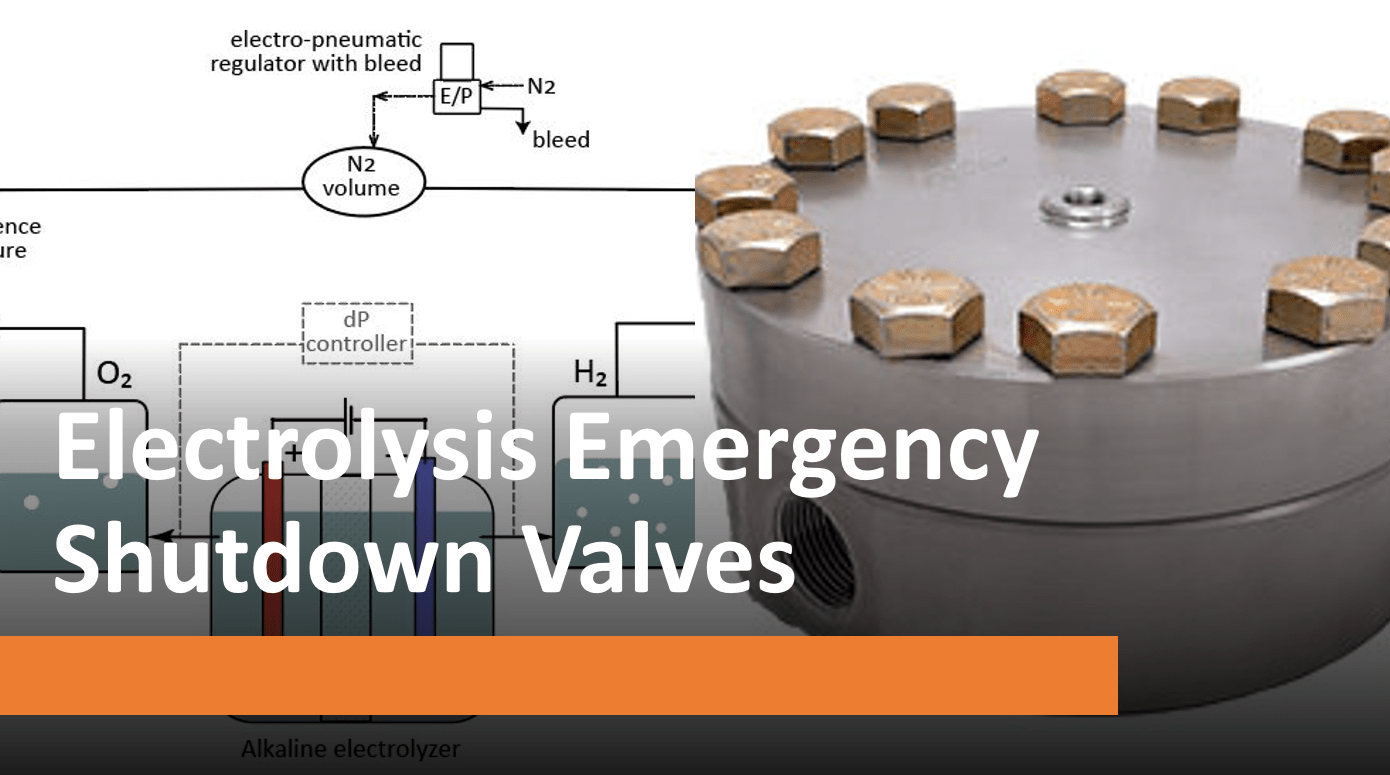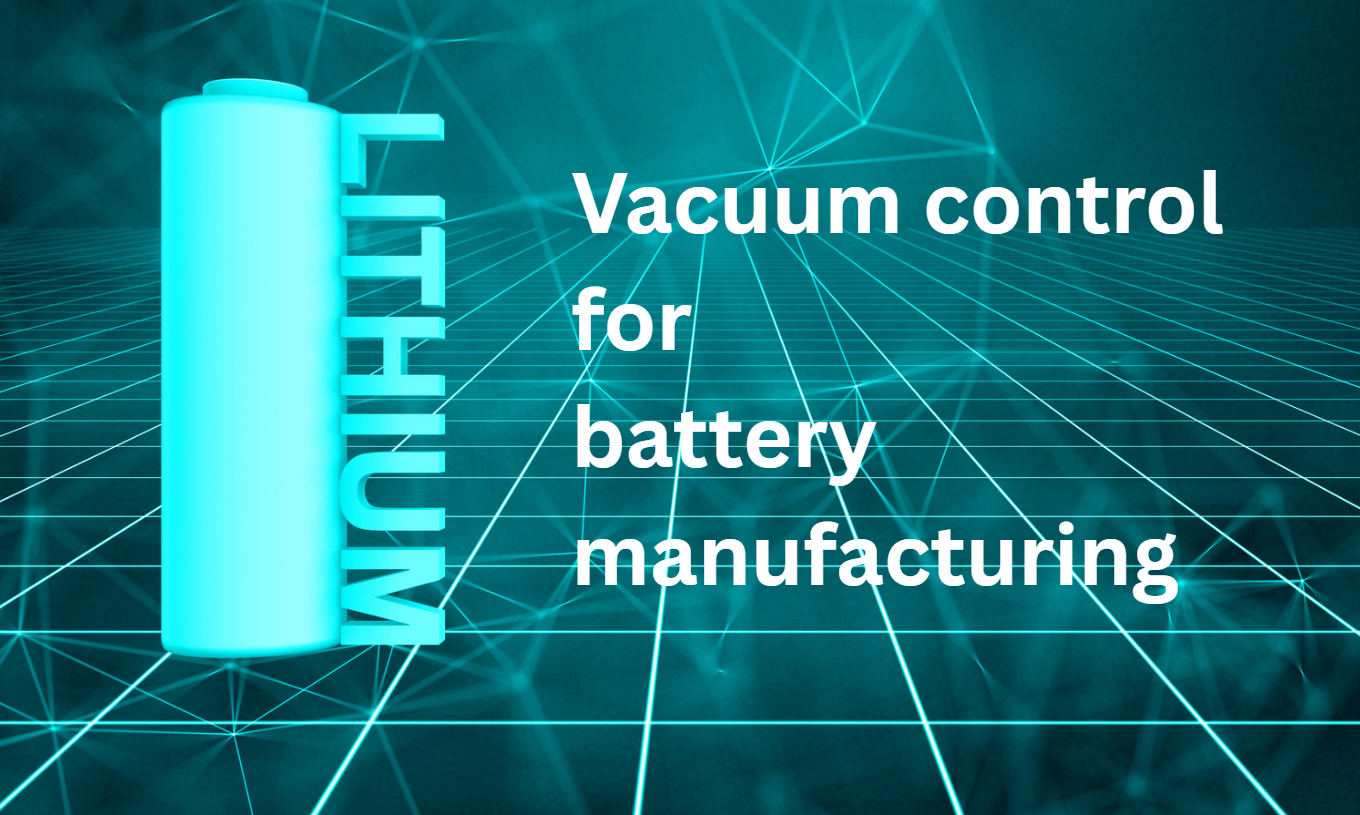Electrolysis is the chemical process of using electricity to divide a molecule into its component parts. It plays a key role in hydrogen and other renewable energy technologies, which has led to increased exploration and activity in the field.
Many electrolysis applications require extremely precise fluid control that can respond to changes almost immediately.
The direct-sealing diaphragm valve technology found in Equilibar® devices makes them uniquely well suited to handle these demands. As a result, our valves and regulators have become favorites for a variety of electrolysis applications, including flow control of water going into the electrolyzer as well as pressure control of hydrogen and oxygen gases coming out.
A new Equilibar application page focuses on another good fit for Equilibar technology: Electrolysis Emergency Shutdown Valves.
The need for emergency shutdown valves in electrolysis
Popular electrolysis techniques such as alkaline electrolysis, proton exchange membrane electrolyzers and solid oxide electrolysis cells involve potentially explosive or flammable gases. As a result, precautions must be taken when designing electrolysis systems, including incorporating a system for an emergency shut down operation.
Emergency shutdown/depressurization procedures may be initiated for a variety of reasons, but the goal is always to safely bring the system pressure down to atmosphere so that the issue that triggered the shutdown can be addressed.
Fluid control challenges in shutdown procedures
Emergency shutdown procedures for electrolysis present specific fluid control challenges. In alkaline electrolyzer systems for example, a thin membrane separates the hydrogen and oxygen sides of the electrolyzer cells. These membranes have limitations in terms of the maximum pressure differential they can tolerate before rupturing, oftentimes on the order of 10 – 100 millibar.
If the membrane ruptures, the hydrogen and oxygen will intermingle, creating a dangerous mixture of explosive gas. The pressure on both the hydrogen and oxygen sides of the system must be brought down at the same rate to minimize the differential pressure across the membrane. However, that sort of accuracy can be difficult to accomplish with a traditional control valve for several reasons, including:
- The mass flow rates will vary dramatically between the hydrogen and oxygen lines due to the difference in the weights of each gas.
- The initial starting pressure can be rather high, oftentimes over 30 bar, while still requiring accuracy in the tens of millibar.
- The gas flows often contain liquid condensation.
- Reliance on closed loop control is not ideal due to the added complexity or explosion hazards.

Advantages of Equilibar technology for shutdown valves
Equilibar® back pressure regulators (BPRs) provide a good solution for emergency shut-down or blow-down systems in electrolyzers. These dome-loaded valves feature a multi-orifice flow path and a single supple diaphragm to control pressure. The multi-orifice design allows for stable control in wide flow ranges such as those experienced in emergency shutdown. Other advantages include:
- The unique design provides for immediate response to process upsets and the BPR can easily maintain pressure of multi-phase fluids of gas and liquid together.
- Two BPRs can control at the same pressure by using a common volume tied to the domes of each BPR.
- A differential pressure on the scale of tens of millibar can be maintained between the two lines, even with a high initial pressure (30 bar or more).
For more details about using Equilibar valves and regulators for electrolysis emergency shutdown systems, please see our new Electrolysis Emergency Shutdown Valves application page.
We also invite you to contact one of our application engineers, who are experienced in designing fluid control systems for electrolysis and other Hydrogen Energy applications, as well as demanding scenarios in many other other industries. They look forward to hearing about your unique pressure or flow control challenges.
[/button]Contact an Engineer



